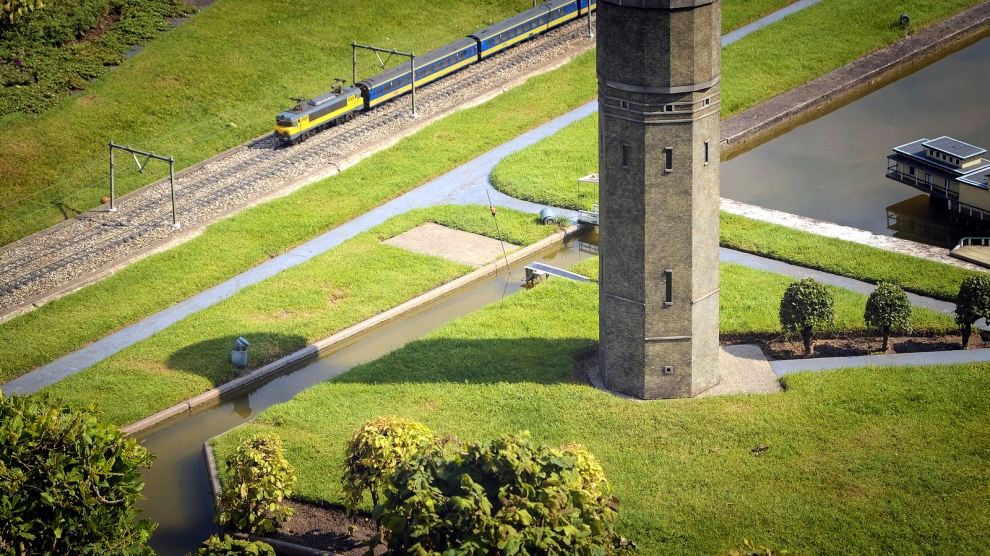In today’s fast-paced world, technology progressively plays a more prominent role and helps individuals, private businesses, and public sector alike live and function more easily and efficiently. Innovation comes hand in hand with technology development, shaping our lives in every imaginable way, and will continue to do so for the times to come. How does this reconcile with tradition, though? As large cities embrace this change, seeking new ways to innovate, adopting new technologies, undertaking large projects, and investing vast amounts of money, rural areas tend to fall behind. Smaller municipalities often lack the capacities, will or finances to drive new innovative initiatives. How should we deal with this clash between innovation and tradition?
Bringing tradition and innovation together
When such disparities in the amount of investment made and projects carried out between large cities and rural areas happen, the gap in their development is widens. To start closing the gap, an appropriate mechanism must be put in place to facilitate the flow of capital into rural areas, provide the necessary skills and knowledge, and attract investors and capital to smaller projects typical for smaller municipalities.
An effective approach to address this issue is creating an investment platform for smart projects. The platform essentially serves as an aggregation mechanism, allowing the grouping of a number of smaller projects together in order to reach the critical size to be eligible for grants and/or other financial instruments. As a result, investors looking for larger or more diversified investments do not focus on large projects in the capitals only, but can also pour capital into rural or less developed areas. Additionally, ESIF and other EU funds can be accessed and utilised more easily.
Knowledge transfer
On top of that, municipalities often lack the necessary capacity, skills or knowledge to successfully implement and carry out innovative projects. Therefore, it is crucial to provide the municipalities with the technical assistance and focus on capacity building on their side to equip them with the skills needed to sustainably promote innovation in the future. The technical assistance can be provided on the investment platform as well. It is, therefore, crucial to transfer the knowledge and the capacities to the municipalities to ensure sustainability of the platform and its capacity to function long-term.
Another approach we found effective to foster innovation across regions is involving multiple stakeholders from both public and private sectors. The quadruple helix is an established model for this purpose, linking academia and citizens with the public and private sectors together in a multidisciplinary approach. The relationship enables idea sharing, support and cooperation, bringing the capacities of all stakeholders together in a joint effort to promote innovative projects.
Creating such a collaborative ecosystem facilitates the usage of additional tools such as living labs – essentially testing environments for local start-ups where they can interact with their end users, verify their ideas and implement new technologies. The participation of the public sector helps to address the urban and/or rural development challenges more efficiently, while the involvement of citizens creates a more realistic environment. There are many best practices where such an approach was implemented.
Additionally, on top of the cooperation and involvement of multiple stakeholders, focusing on regional initiatives, partnerships, engagement across all stakeholder groups, promotion of start-ups and the rural-urban linkage also help formulate regional strategies and develop investment opportunities. The collaborative approach allows us to adapt innovation to different environments based on its specific needs. The participation of the stakeholders on the formulation of municipal and regional strategic plans further helps the promotion of investment opportunities, engaging private sector investors and driving start-ups.
A sustainable future
Over the past few years, legislators have continued to acknowledge the importance of sustainable development and, therefore, positive change across the regions is also driven by the recent developments in smart legislation. For example, minimum heat efficiency standards for buildings boost smart and energy efficient housing projects that we often see being carried out in our practice due to their immediate impact and relative affordability.
The gap in investments between the urbanised cities and the more traditional rural areas is widening and directly impacts their position on innovation and the adoption of smart projects. However, it is not the lack of will but rather the lack of appropriate tools that hinders development. Through an aggregation mechanism, multi-source financing, leveraging rural-urban linkage, providing the projects with the needed technical assistance and transferring knowledge, this process can be reversed towards a more sustainable future.


Add Comment